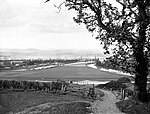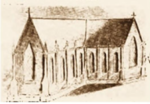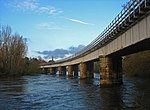HM Prison Perth
1842 establishments in Scotland19th-century establishments in ScotlandCategory A listed buildings in Perth and KinrossExecution sites in ScotlandListed buildings in Perth, Scotland ... and 3 more
Listed prison buildings in ScotlandPrisons in Perth, ScotlandUse British English from February 2018

HM Prison Perth is a prison in Perth, Scotland that houses short term adult male prisoners (those prisoners serving under 4 years). It was originally constructed to hold French prisoners captured during the Napoleonic Wars, and is the oldest prison in Scotland that is still in use.
Excerpt from the Wikipedia article HM Prison Perth (License: CC BY-SA 3.0, Authors, Images).HM Prison Perth
Edinburgh Road, Perth Upper Craigie
Geographical coordinates (GPS) Address Website External links Nearby Places Show on map
Geographical coordinates (GPS)
| Latitude | Longitude |
|---|---|
| N 56.385555555556 ° | E -3.43 ° |
Address
HMP Perth
Edinburgh Road 3
PH2 8AT Perth, Upper Craigie
Scotland, United Kingdom
Open on Google Maps










